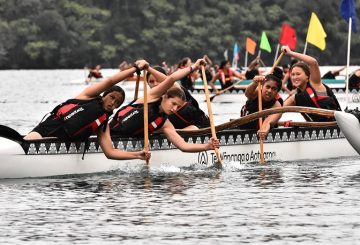Internationally acclaimed architect and researcher Professor Anthony Hoete and his team will this month conduct a full-scale seismic test on ancient Māori construction techniques they aim to use to rebuild a historic Bay of Plenty wharenui.
The wharenui near Opōtiki has not stood since the Napier earthquake, and a team from the University of Auckland, led by Hoete, will incorporate endangered construction knowledge called mīmiro to build a full-scale prototype timber structure.
This week team will test the seismic resilience of the prototype thanks to the support of Toka Tū Ake EQC.
Hoete and Māori architectonic researcher Dr. Jeremy Treadwell have designed and built the timber portals by using interlocking compression joints, instead of bolting parts together. At the same time, ropes will pull the structure to the ground like a tent.
In the testing stage, his team will collaborate with the School of Engineering to pull the vertical portals sideways using a winch off Professor Jason Ingham’s jeep. This will test the horizontal strength while the vertical strength is tested using water weights.
The project was awarded funding from Toka Tū Ake EQC (Earthquake Commission) to enhance the seismic resilience of the new wharenui and its community.
Hoete says that the origins of mīmiro can be traced back to the ships and strong sail lashing his ancestors used to travel across the Pacific.
The most important carvings representing the iwi’s ancestors were saved from the wreckage and remarkably stored in a shed at the marae for nine decades.
Credit: sunlive.co.nz






























































